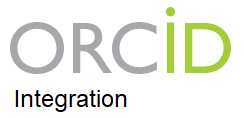Management of extremely severe maternal morbidity from obstetric haemorrhage in Villa Clara 2016 - 2018
Authors
DOI:
https://doi.org/10.37980/im.journal.revcog.20211779Keywords:
extremely severe maternal morbidity, treatment, obstetric hemorrhageAbstract
Introduction: Obstetric hemorrhage constitutes an obstetric emergency that requires urgent and orderly resuscitation, even before establishing its cause. Objective: to characterize the management of extremely serious maternal morbidity due to obstetric hemorrhage. Method: Developmental, observational and cross-sectional and retrospective study of patients with extremely serious maternal morbidity due to obstetric hemorrhage at the “Mariana Grajales” University Gineco-Obstetric Teaching Hospital in Villa Clara, during the period from January 2016 to December 2018. Results: The vast majority of patients required some type of surgical treatment for the resolution of severe maternal morbidity, despite the fact that pharmacological or advanced treatments were used in these cases. 56.1% did not present clinical signs of shock, despite which 34.8% of these required advanced management in the treatment and up to 43.5% surgical management, 15 obstetric hysterectomies were performed 36, 6% Conclusions: surgical management prevailed for the resolution of extremely serious maternal morbidity due to obstetric hemorrhage, and was characterized by a modest use of conservative surgical techniques. Obstetric hysterectomy was the most widely used technique, which was not conditioned by the cause of the hemorrhage, but rather by the state of maternal involvement.
Downloads
Published
Issue
Section
License
Copyright (c) 2021 Infomedic Intl.Derechos autoriales y de reproducibilidad. La Revista RevCog es un ente académico, sin fines de lucro, que forma parte de la Sociedad Centroamericana de Ginecología y Obstetricia. Sus publicaciones son de tipo ACCESO GRATUITO y PERMANENTE de su contenido para uso individual y académico, sin restricción. Los derechos autoriales de cada artículo son retenidos por sus autores. Al Publicar en la Revista, el autor otorga Licencia permanente, exclusiva, e irrevocable a la Sociedad para la edición del manuscrito, y otorga a la empresa editorial, Infomedic International Licencia de uso de distribución, indexación y comercial exclusiva, permanente e irrevocable de su contenido y para la generación de productos y servicios derivados del mismo.








